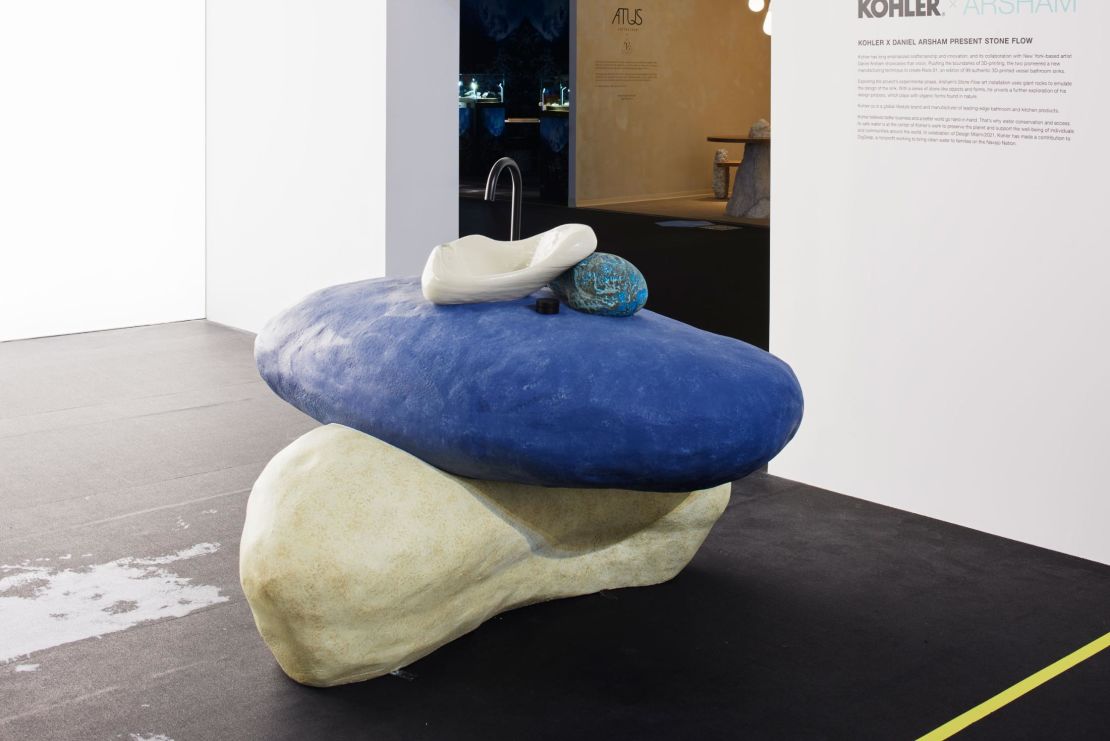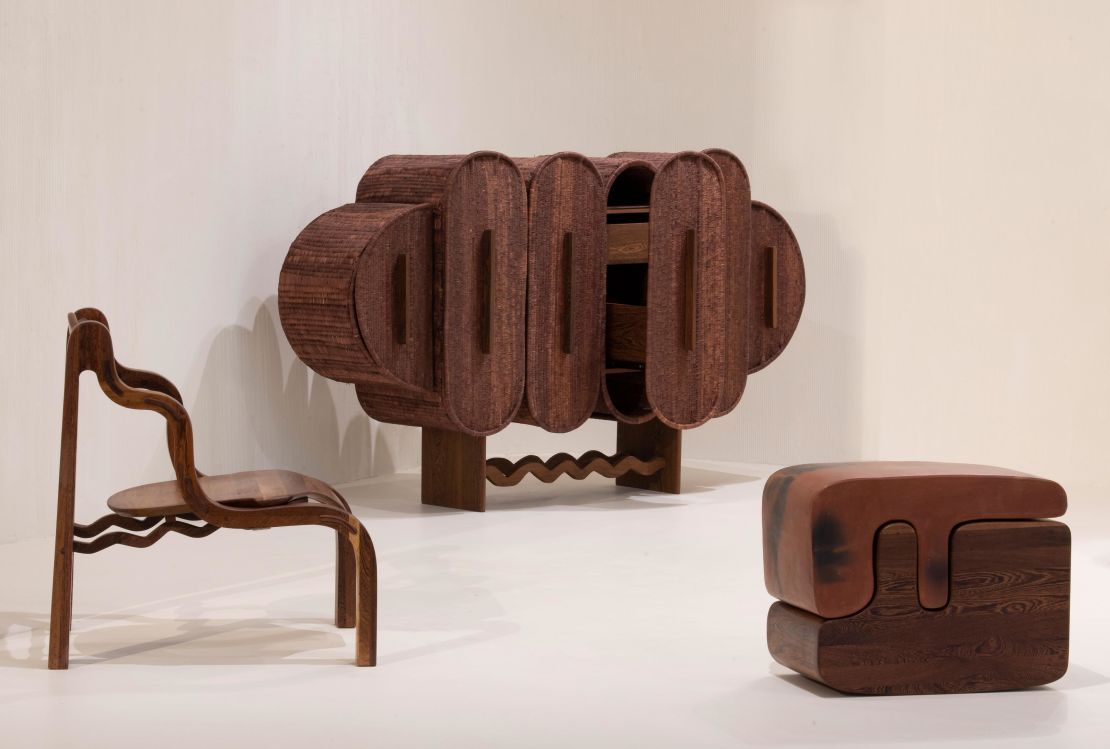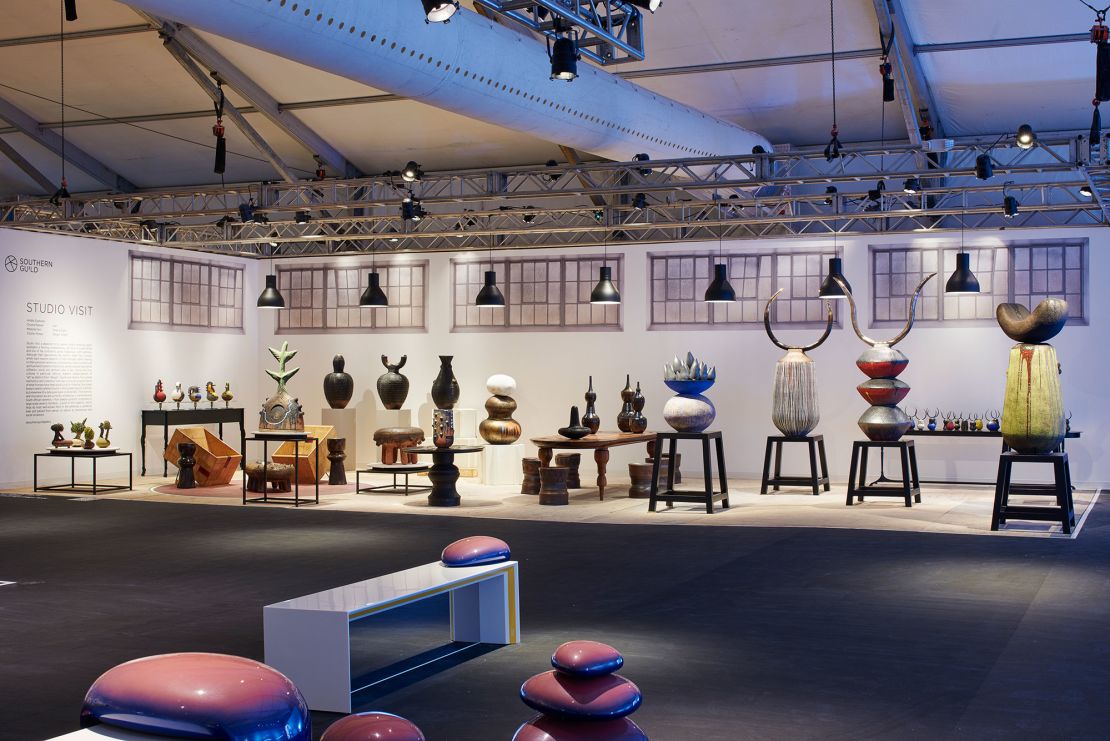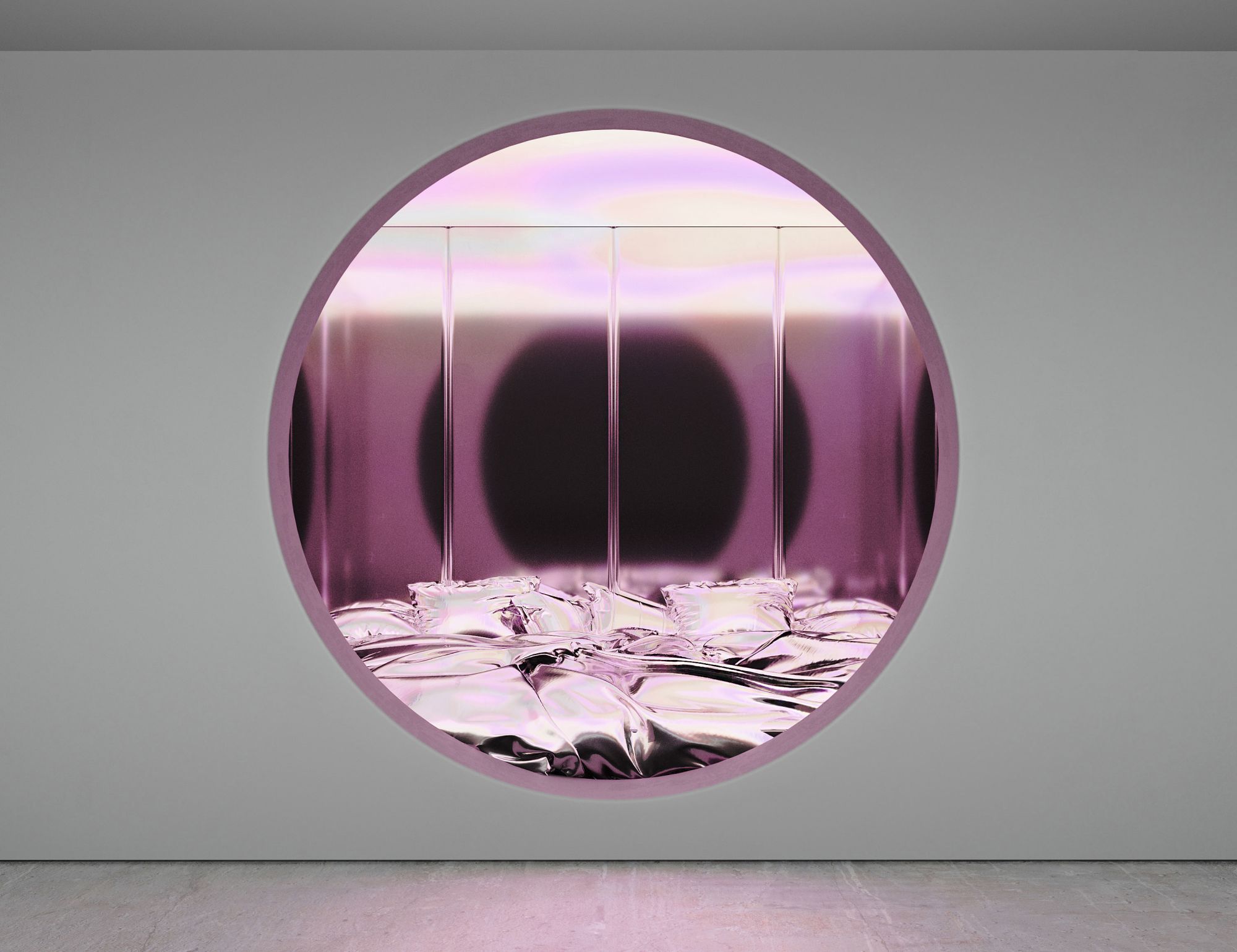The luxury world’s modern codes are evolving. What the word means – and how luxury is created – has been long scrutinized, but the events of the past two years have no doubt spurred new definitions or interpretations of the term.
With so much collective screen time, prohibited movement, omniscient social anxiety and a near certainty that this new pandemic-induced paradigm is here to stay, how could they not?
2022’s emergent notion of luxury – complex as luxury is to define – is that there’s a greater sense of cross-discipline interconnectivity, material substantiality, virtual influence and, perhaps, point and purpose.
One need only to look at the field of homes and interiors to see examples of the shift (it’s a fitting category, too, considering how much more time we’ve spent in our dwellings of late). At the just-concluded Design Miami – the world’s preeminent collectible design fair – three clear themes emerged, all of which underpin luxury’s new and future recalibration: A digital influence in the physical realm (and vis versa), a focus on merging low-fi utility with high-end concepts, and, most notably, a deeper care for craft.
This year, Design Miami also introduced DMBX, an e-commerce platform for the “next generation” of collectors, according to the fair. The platform features more affordable options from well known designers, whose mainline work may otherwise go for tens if not hundreds of thousands of dollars. Retail prices on DMBX start at just $22.00; the launch is in line with industries’ overall shifting values of late – luxury is no longer defined by exclusivity and expensiveness.
Drawing from digital
Harry Nuriev is a Russia-born artist, architect, and designer. He is also the founder of Crosby Studios, a New York and Moscow-based creative practice that has made significant inroads in recent years (Nuriev’s collaborative couch with Balenciaga, which saw a clear-plastic sectional sofa stuffed with damaged or obsolete Balenciaga clothing stock, went viral in 2019).
Over the last couple of years, his work has become more conceptual: A mindset that brings to life an aesthetic that looks equally at home in the tangible and virtual worlds. At Design Miami, his installation, called “The Bedroom,” featured a floor-spanning reflective silver comforter with matching pillows and wall panels. Overhead, a morphing LED light emitted the warm tones of a “Los Angeles sunset.” The work felt as if it was pulled from some future meta-basement, where avatars might one day have sleepovers.

“All of my projects are very digital,” Nuriev told CNN Style, while sitting on his mercurial duvet. “Sometimes, people get confused when they see my work on screens, thinking they’re just projections. Our style is already meant to be in the metaverse, we’re just adapting it back, in a way, to something you can feel and touch.”
Nuriev also agreed that with the rise in popularity of NFTs (non-fungible tokens) and the advancement of augmented and virtual realities, it’s only a matter of time before the digital craze sweeping the art world becomes more commonplace in the home (in fact, the first digital NFT house sold this year for $500,000). And, it’s likely an inevitability that, in time, we’ll own or rent digital residences in addition to our actual dwellings – the metaverse grows larger by the hour.
Utility gets hyper-upgraded
At Design Miami, the American plumbing, kitchen and bathroom manufacturing company Kohler debuted a collaborative piece with the artist Daniel Arsham named “Rock.01.” Artists and product makers partnering isn’t new, but, on something as commonplace and fundamental as a bathroom sink, the link-up further proved that, in some ways, nothing is off limits when it comes to fusing high-low concepts.
Furthermore, the sink – an amorphous, organic pile of 3D-printed vitreous china and hand-poured brass – is only available in a series of 99, adding a limited edition element more often witnessed in fine art galleries than at mass production household appliance companies.

Arsham’s sculptural oeuvre tends to address questions about time and longevity, and, regarding this project, he said, in a statement: “[It] melds the future of 3D-printing technology with the most basic methods of hand-cast brass. It is literally the new, resting on top of the old.”
A deeper consideration for craft
“The continuation of craft in its numerous, engaging approaches remains universal,” said Peter Mabeo, the designer and entrepreneur behind the Gaborone, Botswana-based firm Mabeo, in a statement regarding his collaboration with Fendi.
The Italian luxury fashion label (which also has its own furniture line called Fendi Casa) has long been involved with Design Miami, though their commissions have generally been slicker – and more manufactured in feel.
Such was not the case this year, in which Mabeo worked with Silvia Venturini Fendi, Delfina Delettrez Fendi (Silvia’s jewelry designer daughter) and the brand’s artistic director Kim Jones to curate and produce a 10-piece installation titled “Kompa.” The pieces on view were all handmade by artisans across Botswana, deploying centuries-old woodworking and metalworking techniques. while channeling, in subtle ways, Fendi’s distinct style.

For example, a Panga Panga wood chair, named “Maduo,” and made in Botswana’s Mmankgodi Village, reimagines a piece of jewelry designed by Delettrez Fendi with repeated “F” shapes. According to an accompanying booklet regarding the exhibition, the piece represents “how the simplest ideas can be realized with care and dedication to craft.”
Fendi’s pivot from sleek and sexy into something deeper, something more artisanal – and ultimately something more personal – was echoed at Southern Guild, a South African gallery that presented a show called “Studio Visit.”
There, amongst towering vases and terracotta benches, founder and CEO Trevyn McGowan spoke to a similar sentiment.
“People are seeking a greater connection to something, and, with these works, there’s a calming, enticing, and very human feeling apparent,” she said, adding, “I like to think that each piece here conveys the energy of the makers.”

Southern Guild highlighted four designers – Andile Dyalvane, Madoda Fani, Chuma Maweni, and Zizipho Poswa – in a cohesive, inarguably beautiful showcase of local and longstanding craft that also served to illustrate both traditional and contemporary life in South Africa. Poswa’s towering urns were set with bronze horns, as an homage to the spiritual offering at the heart of an ancient African custom called lobola, which is a dowry-like practice. Maweni’s wheel-thrown ceramics retain a monastic reverence, steeped in centuries of passed down practice and yet appearing ultra modern, in tandem.
McGowan notes that this deeper appreciation for craft and meaning is being seen globally, not just in the region she represents.
“People are thinking more, and being more sensitive,” she said. “It’s less about the ‘I’ve-got-to-have-that-for-the-sake-of-having-that’ mentality, and more about a proper passion – and connection.”
Top image: Harry Nuriev’s futuristic chamber “The Bedroom,” on show at Design Miami 2021.





